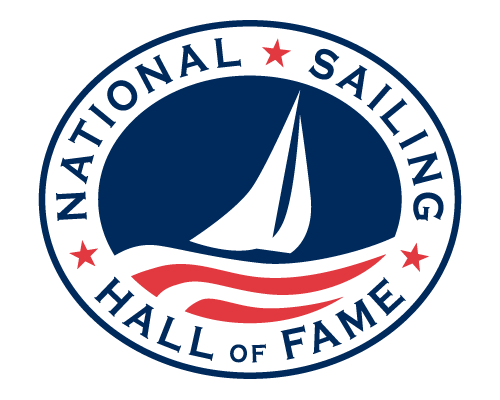
Bruce Kenneth Farr OBE
May 17, 1949 -
Auckland, New Zealand
Fast Boats for All Conditions
In 1981 at the age of 32 Bruce Kenneth Farr had earned a reputation as an innovative naval architect and was a champion sailor. He set up shop in Annapolis, Maryland, which was a long way from his native home of New Zealand. He said at the time that the East coast of the United States was a center of yachting and closer to Europe. He designed his first boat at the age of eleven and named her Resolution. The ten foot dinghy won several regattas and the young, aspiring sailor worked on a few designs in the Moth Class. His most successful Moth was named Mammoth. His designs had bold names to go along with his creative work. Farr learned early in his career that light displacement designs were fast. Late in his career the great naval architect, Olin Stephens II, appreciated Farr’s ability, “I certainly respect Bruce Farr. I was associated early in a small way with Young America. I certainly felt he was right. I didn’t hear him say anything I would disagree with.” Bruce Farr has an enviable record racing small boats. He won ten National level championships as skipper between the ages of 16 and 26. His victories were in Moths, the Q Class, 18 foot skiffs, Quarter Ton and Half Ton regattas, and the Southern Cross Cup. At the age of 26 he retired as a racing sailor to concentrate on his design work. Farr left college early to concentrate on yacht design. He worked on his own out of his parent’s basement. In 1971 his Half-Ton design, Titus Canby won the South Pacific Half-Ton Trophy. His designs were winning and Farr gained notoriety. In 1976 he partnered with Russell Bowler. Together they founded Bruce Farr Yacht Designs (later re-branded as Bruce Farr and Associates and finally Farr Yacht Design). The firm was clever with the use of modern materials. The firm’s design, Ceramco New Zealand performed well in the 1981-82 Whitbread Round the World Race in-spite of a broken mast. The speed of the boat impressed her skipper, Peter Blake, who would commission Farr to design Steinlager II that went on to win the 1989-90 Whitbread Race. For the next twenty years Farr was the leading designer for round the world racers. He and Bowler designed winning racers of all sizes and branched out to comfortable cruising yachts. Farr designs would win over fifty world championships. Their one-design classes were international favorites that included the Farr 40, Farr One Design 30, and a series of yachts for Beneteau. Farr was the naval architect for seven America’s Cup campaigns based in New Zealand and the United States. His firm was responsible for hundreds of designs that were frequently breakthroughs that influenced the direction of naval architecture worldwide. Farr was a gifted sailor who studied how to make boats sail fast. He spent his career at the leading edge of the sport. His ability to work within the exacting standards of handicap rating rules is legendary. When asked how he was able to design boats for competing round the world racers Farr explained, “We asked the sailors what they anticipate the weather conditions will be and we optimize their boat for those conditions.” ~Gary Jobson
Preserving America’s Sailing Legacy
Engaging Sailing’s Next Generation
Stay Connected to the National Sailing Hall of Fame
